|
Books 51 -
100 |
|
Dealey Plaza -
National Historic Landmark & The 6th Floor Museum |
|
 |
Hunt Conover
1997 |
This book
illustrated with more than seventy historic photographs and diagrams,
provides an overview of the tragic events of November 22,1963, from the
arrival of President John F.Kennedy in Texas through the shocking events
that followed. Readers will find comprehensive tours of the Kennedy
assassination site at Dealey Plaza and the exhibits in the Sixth Floor
Museum, located on the sixth floor of the former Texas School Book
Depository. |
|
Dear Mrs. Kennedy
[The world shares
its grief letters, November 1963] |
|
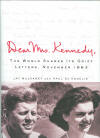 |
Jay Mulvaney and
Paul De Angelis
2010 |
In the weeks
and months following the assassination of her husband, First Lady
Jacqueline Kennedy received more than one million letters. The impact of
President Kennedy's death was so immense that people from every station in
life wrote to her, sharing their feelings of sympathy, sorrow and hope.
More than just a compendium of letters, this book "Dear Mrs Kennedy" uses
these many voices to tell the unforgettable story of those fateful four
days in November, when the world was struck with shock and sadness. It
vividly captures the months that followed as a nation - and a family -
attempted to rebuild.
Filled with emotion, patriotism, and insight, the letters are a poignant
time capsule of one of the seminal events of the twentieth century.
"Dear Mrs Kennedy" offers a diverse portrait not only of the aftermath of
the assassination, but of the Kennedy mystique that continues to captivate
the world. |
|
Death in Dallas -
The JFK Assassination |
|
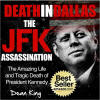 |
Dean King
ebook
2012 |
The
assassination of John F. Kennedy remains one of the most defining moments
in American history. And decades after the tragedy, the controversy rages
on. This book gives a fascinating into Kennedy’s life, the secrets behind
the facade, and the details of his assassination.
Kennedy’s presidency was a mass of contradictions, public triumphs, dark
secrets and endless controversy. This book exposes the truth behind his
background, his rise to power, his adulterous womanizing and ultimately
the bullets that took his life. |
|
Death
of JFK - Assassination and aftermath |
|
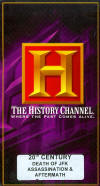 |
The History
Channel
VHS |
Brilliant special from History Channel on the Death of the 35th President
of the United States.
It is the Holy Grail of conspiracy theorists. More than 30 years after the
fact, the assassination of John F. Kennedy remains a topic of intense
debate. Did Oswald act alone? Was the Warren Commission pressured into
releasing a false report? Is it possible that the CIA had Kennedy killed?
Join Mike Wallace for a point-by-point investigation of these and other
questions surrounding the events of November 22, 1963. Extensive footage
from the CBS archives plus clips from the world-famous Zapruder home movie
bring the tragedy to life, while interviews with those who were there
including reporters and government officials capture the chaos and grief
of one of the most terrible moments in American history. |
|
Deep Politics and
the Death of JFK |
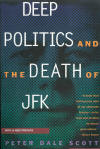 |
Peter Dale Scott
1996 |
"In his long awaited
magnum opus... Scott does not offer a "who done it". Instead, he uses the
assassination as a point of entry for an extended tour through little
known, long buried, and truly disturbing regions of American politics"
Jonathan Marshall, Tikkun |
|
Definitive
Proof : The Secret Service Murder of President J.F.Kennedy |
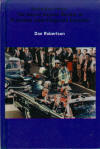 |
Dan Robertson
2006 |
The material in this book, together with the evidence contained in the
enhanced Zapruder film, tries to present evidence that President Kennedy
was murdered by a federal agent by the name of William Greer, the driver
of JFK Presidential Limousine in Dallas.
|
Denial of
Justice
(Dorothy Kilgallen, Abuse of Power and the most compelling JFK
Asssassination Investigation in History) |
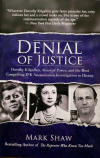 |
Mark Shaw
2018 |
Why is What’s My Line? TV
star and Pulitzer-Prize-nominated investigative reporter Dorothy Kilgallen
one of the most feared journalists in history? Why has her threatened
exposure of the truth about the JFK assassination triggered a cover-up by
at least four government agencies and resulted in abuse of power at the
highest levels?
Denial of Justice—written in the spirit of bestselling author Mark Shaw’s
gripping true crime murder mystery, The Reporter Who Knew Too Much—tells
the inside story of why Kilgallen was such a threat leading up to her
unsolved murder in 1965. Shaw includes facts that have never before been
published, including eyewitness accounts of the underbelly of Kilgallen’s
private life, revealing statements by family members convinced she was
murdered, and shocking new information about Jack Ruby’s part in the JFK
assassination that only Kilgallen knew about, causing her to be marked for
danger.
Peppered with additional evidence signaling the potential motives of
Kilgallen’s arch enemies J. Edgar Hoover, mobster Carlos Marcello, Frank
Sinatra, her husband Richard, and her last lover, Denial of Justice adds
the final chapter to the story behind why the famous journalist was
killed, with no investigation to follow despite a staged death scene. |
|
Did the
Mob kill JFK? |
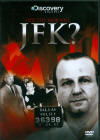 |
Discovery Channel
2009 |
Based on historian Lamar
Waldron' startling book, this programme presents compelling evidence that
the Mafia was behind the assassination of President John F.Kennedy. After
almost half a century in the shadows an FBI informant has come forward to
give an explosive, never before seen interview that gives details of the
very man who ordered the hit. This man shared a prison cell with Carlos
Marcello, the notorius New Orleans godfather, who confessed to him that he
had orchestrated the president's murder.
"Did the Mob kill JFK?" backs this up as it tracks Marcello's links
with both Lee Harvey Oswald and Oswald's assassin, Jack Ruby. It also
draws on the testimony of historians, investigators and eyewitnesses,
including an interview with former Secret Service agent Abraham Bolden,
who claims an aborted attempt on the President's life in Chicago early in
November was covered up. This simply is a must-watch for all those
intrigued by the mistery that surrounds the assassination of John
F.Kennedy. |
|
Documentari su
Omicidio JFK |
| |
VHS |
Italian. |
Doppio
gioco
[L'esplosiva
storia segreta del Gangster che controllava l'America] |
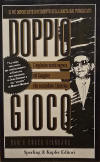 |
Sam e Chuck Giancana
1992 |
Italian
version of the book: Double Cross".
On the cover "the first real evidence of Giancana's involvement in the
assassination of John Kennedy and the "suicide" of Marilyn Monroe".
One of the most feared Chicago mobsters Sam Giancana clawed his way to the
top of the Mafia hierarchy by starting as a hit man for Al Capone. He was
known as one of the best vehicle escape artists, a tenacious business man,
and a ruthless killer. He partied with major stars such as Frank Sinatra
and Marilyn Monroe and did business with agents ranging from the CIA to
the Vatican to the shah of Iran. When politician Joe Kennedy gave Giancana
the chance to use mob muscle to get his son John elected, Giancana jumped
at the task. But the Kennedy brothers double-crossed him, waging full-out
war on organized crime throughout the United States. And Giancana went
after them.
Written with suspense and conviction, we learn about how the CIA asked
Giancana to assassinate Fidel Castro. The book includes Giancana's
testimony about the truth of his involvement in the deaths of Monroe and
others, among others. Chuck Giancana, Sam's brother, contributes a unique
perspective of the mobs relationship with the Bay of Pigs and many other
pivotal events of the 60's and beyond. Double Cross is an eye-opening
account of the interworking of the government and the mob and how this
relationship has impacted American history. |
|
Dossier
KGB: Kennedy e Oswald |
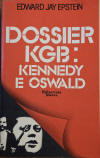 |
Edward Jay Epstein
1978 |
Italian
version of the book: "Legend: the secret world of Lee Harvey Oswald".
A biography of Lee Harvey Oswald, the alleged assassin of President John
F. Kemmedy. This book succeeds in finally breaking the legend created for
Oswald. It begins by revealing an incredible series of contacts between
rival intelligence officers concering the JFK assassination and culminates
in a series of events that turn the CIA inside out. Investigative author
Edward Jay Epstein managed to obtain Oswald's address book and interview
more than 150 people who knew him. |
Double
Cross
[The
esplosive inside story of the Mobster who controlled America and
masterminded the murder of JFK] |
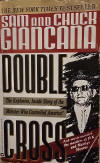 |
Sam e Chuck Giancana
1992 |
One of the most feared Chicago mobsters Sam Giancana clawed his way to the
top of the Mafia hierarchy by starting as a hit man for Al Capone. He was
known as one of the best vehicle escape artists, a tenacious business man,
and a ruthless killer. He partied with major stars such as Frank Sinatra
and Marilyn Monroe and did business with agents ranging from the CIA to
the Vatican to the shah of Iran. When politician Joe Kennedy gave Giancana
the chance to use mob muscle to get his son John elected, Giancana jumped
at the task. But the Kennedy brothers double-crossed him, waging full-out
war on organized crime throughout the United States. And Giancana went
after them.
Written with suspense and conviction, we learn about how the CIA asked
Giancana to assassinate Fidel Castro. The book includes Giancana's
testimony about the truth of his involvement in the deaths of Monroe and
others, among others. Chuck Giancana, Sam's brother, contributes a unique
perspective of the mobs relationship with the Bay of Pigs and many other
pivotal events of the 60's and beyond. Double Cross is an eye-opening
account of the interworking of the government and the mob and how this
relationship has impacted American history. |
|
Dr. Mary's
Monkey |
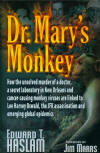 |
Edward T. Haslam
2007 |
On the cover : "How the
unsolved murder of a doctor, a secret laboratory in New Orleans and
cancer-causing monkey viruses are linked to Lee Harvey Oswald, the JFK
assassination and emerging global epidemics".
On the backcover : "When New Orleans native Ed Haslam began his modest
investigation into the curious life and shocking death of the brilliant
Tulane medical professor Dr. Mary Sherman, he couldn't have imagined that
this inquiry would connect some of the city's most prominent citizens to
"lone nut" Lee Harvey Oswald, to the Mafia, and to forces high inside the
U.S. Government - nor that these new discoveries would ultimately change
our understanding of a fateful November day in Dallas. But they have!". |
|
Ecco chi ha
ucciso John Kennedy |
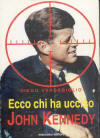 |
Diego Verdegiglio
1998 |
This is the most complete
book on the subject ever written in Italian. For completeness of
investigation and analysis, it is the Italian equivalent of Posner's "Case
Closed", arriving at the same conclusion : Lee Harvey Oswald was the lone
killer of JFK. A must-to-have book for all the Italians who want to know
all of JFK Assassination. |
|
Eddie Barker's
Notebook |
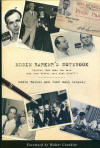 |
Eddie Barker & John Mark Dempsey
2006 |
November 22nd,1963. The
date alone brings to mind a thousand images and a rush of emotion even to
people who were not alive at the time of John F.Kennedy's assassination.
As news director and anchor of KRLD-TV, Channel 4, then the CBS affiliate
in Dallas, Eddie Barker stationed himself as the Trade Mart where Kennedy
was to speak. Of course, the President never arrived. And so, Barker found
himself ad-libbing on the air, knowing that something terrible has
happened but not exactly sure of what is was. When a doctor acquintance
from nearby Parkland Hosptal whispered the awful news in his ear, Eddie
made what has been called "the greatest snap evaluation of a source in
broadcasting history". Eddie Barker became the first reporter to announce
to America that John F.Kennedy was dead.
Certainly Barker's reporting on the assassination and all the other events
closely associated with it are at the heart of this book. But this is also
a book by one of the true pioneers of local television news.
From the embryonic days of local TV news, swiping stories from the local
newspapers and holding up wire-service photos on camera, to the days of
true electronic news gathering, Eddie Barker was there. Barker is one of
the handful of broadcast journalists who shaped what we take for granted
today as local news. |
|
Encyclopedia of
JFK Assassination |
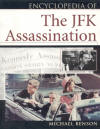 |
Michael Benson
2002 |
This is an indispensable
one-volume reference source for students, researchers, and general readers
investigating the circumstances surrounding President Kennedy's death. |
End of Days
[The
assassination of John F. Kennedy] |
 |
James
Swanson
2013 |
In End of Days, James L.
Swanson, the New York Times bestselling author of Manhunt: The 12-Day
Chase for Lincoln's Killer, brings to life the minute-by-minute details of
the JFK assassination—from the Kennedys' arrival in Texas through the
shooting in Dealey Plaza and the shocking aftermath that continues to
reverberate in our national consciousness fifty years later.
The assassination of John F. Kennedy on November 22, 1963, has been the
subject of enduring debate, speculation, and numerous conspiracy theories,
but Swanson's absorbing and complete account follows the event
hour-by-hour, from the moment Lee Harvey Oswald conceived of the crime
three days before its execution, to his own murder two days later at a
Dallas Police precinct at the hands of Jack Ruby, a two-bit nightclub
owner.
Based on sweeping research never before collected so powerfully in a
single volume, and illustrated with photographs, End of Days distills
Kennedy's assassination into a pulse-pounding thriller that is sure to
become the definitive popular account of this historic crime for years to
come. |
Enemy of the Truth
[Myths,
Forensics and the Kennedy Assassination] |
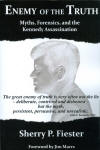 |
Sherry P. Fiester
2012 |
From Jim Marrs' Foreword :
"Sherry Fiester, a longtime student of forensic science, who separates
scientific fact from informed speculation and uninformed theories, is now
sharing her expertise. She undertakes to break out JFK assassination myths
from demonstrable forensic fact, not an easy task considering the
obfuscation and deceit long documented in the JFK case. Right off the bat,
Fiester lays to rest the myth that the Dallas Police Department exercised
all due diligence in following accepted protocols in the acquisition,
handling and securing of assassination evidence. They did not." |
|
Eyewitness
to History |
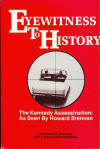 |
Howard L. Brennan
with
J.E. Cherryholmes
1987 |
Among the hundreds of people who
waited in Dealy Plaza for the JFK motorcade to pass, only one person was
able to identify Lee Harvey Oswald as the lone gunman firing from the
Texas School Book Depository. Howard Brennan was seated directly in front
of the building and was able to get a clear view of the assassin as he
fired at the President's car.
Other than the Warren Commission, and a brief statement to CBS, he refused
all other interviews. In 1983 his pastor, the Rev.Edward Cherryholmes
convinced Mr Brennan that he should tell his story so that future
generations will know the truth. Shortly before his death in December of
1983 from heart disease, he read the finished manuscript as told to
Rev.Cherryholmes.
This
copy of the book is signed by Rev.Edward Cherryholmes. |
Falling Chips
[A
deconstruction of the Single-Bullet Theory of the JFK Assassination] |
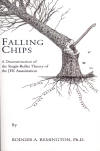 |
Rodger
Remington
2005 |
Rodger
Remington ia ranked an emeritus professor of history at Aquinas since his
retirement in 1997, following 34 years of faculty service.
In this book he tries a deconstruction of the Single-Bullet Theory of the
JFK Assassination. |
False Mystery
[Essays on the Assassination of JFK] |
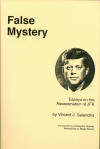 |
Vincent J. Salandria
2004 |
From back cover:
"This volume assembles, for the first time, the historic work of Vincent
J.Salandria.
One of the "first generation" critics of the Warren Commission,
Salandria's article in the Novembre 2, 1964 'Philadelphia Legal
Intelligencer' was the first published article to critically review the
conclusions of the Warren Report.
It and subsequent articles demonstrated the fallacy of the Commission
finding that a single, unassisted gunman shot and killed the thirty-fifth
President of the United States, and advanced the notion that a "false
mystery" has allowed the greatest crime of the twentieth century to remain
officially unsolved." |
|
False Witness |
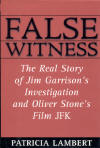 |
Lambert Patricia
1998 |
The real story of Jim
Garrison's investigation and Oliver Stone's film JFK.
This absorbing book tells, for the first time in its entirety, the story
surrounding the ordeal of Clay Shaw, who was arrested and charged with
conspiracy in the assassination of President John F.Kennedy. |
Fatal Hour
[The
Assassination of President Kennedy by Organized Crime] |
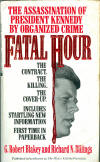 |
Blakey G.Robert and Billings Richard N.
1992 |
Conspiracy book.
From back cover :"FATAL HOUR is the most powerful and convincing scenario
to date of the Mafia's involvement in the assassination of President John
F.Kennedy. The new evidence is more compelling. The personal connections
are truly startling. And the possible motives suggest a vast network of
power, hatred and violent retribution.
Previously published in hardcover as 'The Plot to Kill the President'."
|
Final
Report of the ARRB
[Assassination
Records Review Board] |
 |
ARRB
1998 |
The Final Report
of the Assassination Records Review Board is not a report of findings on
the assassination of President Kennedy. Rather, it reports on the work of
the ARRB to find and declassify "assassination records," and on the
cooperation or lack thereof it received from government agencies.
The ARRB Final Report was issued on September 30, 1998, the day the ARRB
went out of existence. It describes the nature of the problem of secrecy
as seen by the Review Board, and the means by which the Board defined and
implemented its work.
While the ARRB's mission was not to reinvestigate the assassination, it
did interview many persons and also took sworn testimony when it deemed
that the documentary record could be illuminated by doing so. The ARRB's
depositions of witnesses to the autopsy contained much testimony which
indicted the authenticity of the autopsy photographs and X-rays, and other
ARRB work has altered the debate among researchers. This Report does not
reflect some of the truly stunning revelations contained in those
depositions and in other files declassified under the ARRB's review. |
First Hand Knowledge
[How I participated in the CIA-Mafia murder of President Kennedy] |
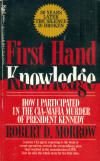 |
Morrow Robert D.
1992 |
Conspiracy book.
A senior CIA agent breaks his silence about his participation in the
CIA-Mafia plot to kill President Kennedy, implicating LBJ, Richard Nixon,
Allen Dulles, and others.
Robert D. Morrow is the author of the controversial bestseller Betrayal.
An alumnus of both PA Military College and Penn State, he holds several
important patents in the electronics and electromechanical fields. He
worked for the CIA as a contract employee from 1959 to 1964 in conjunction
with the Cuban exile movement. He wrote his first book, Betrayal, about
his experiences during this period. |
|
Five
Days in November |
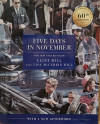 |
Clint Hill & Lisa McCubbin Hill
2023 |
Secret Service agent Clint Hill reveals the stories behind the iconic
images of the five tragic days surrounding President John F. Kennedy’s
assassination in this 60th anniversary edition of the New York Times
bestseller.
On November 22, 1963, three shots were fired in Dallas, President John F.
Kennedy was assassinated, and the world stopped for four days. For an
entire generation, it was the end of an age of innocence.
That evening, a photo ran on the front pages of newspapers across the
world, showing a Secret Service agent jumping on the back of the
presidential limousine in a desperate attempt to protect the President and
Mrs. Kennedy. That agent was Clint Hill.
Now Hill commemorates the sixtieth anniversary of the tragedy with this
stunning book containing more than 150 photos, each accompanied by his
incomparable insider account of those terrible days. A story that has
taken Hill half a century to tell, this is a “riveting, stunning
narrative” (Herald & Review, Illinois) of personal and historical scope.
Besides the unbearable grief of a nation and the monumental consequences
of the event, the death of JFK was a personal blow to a man sworn to
protect the first family, and who knew, from the moment the shots rang out
in Dallas, that nothing would ever be the same. |
|
Flashback
- The untold story of Lee Harvey Oswald |
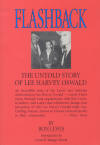 |
Lewis Ron
1993 |
Oliver
Stone has written :
"An incredible story of Mr Lewis's very intimate relationship to Lee
Harvey Oswald - a story I have come, through long acquaintance with Ron
Lewis, to believe. And a story that will forever change your perception of
who Lee Harvey Oswald really was. Chilling, human, almost an Elmore
Leonard quality to their relationship" |
|
Four Days in
November |
 |
Stuart Mel
DVD
1964 |
The
John
Kennedy assassination according to the findings of the Warren Commission.
This documentary is a treasure of footage and timeline details both
recounted through the steady venerable voice of Richard Basehart. An
intimate portrait of a man and his grieving family as much as it is a
moving image document of the assassination of the 35th President of the
United States.
Nominated for Best Documentary Feature Academy Award in 1965. |
|
Four Days in
November |
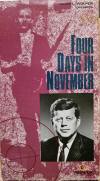
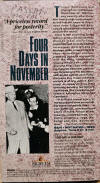 |
David L. Wolper - Mel Stuart
VHS
1988 |
Documentary (NTSC tape)
about President Kennedy's assassination includes joyous moments with
Kennedy and his family as well as insights on Oswald and Ruby and coverage
of the funeral services for both Kennedy and Oswald
Produced by David L.Wolper
and
Directed by Mel Stuart ("Willy Wonka & The
Chocolate Factory"), this documentary explores the assassination of John
F. Kennedy and its impact through a variety of sources -- from
professional media coverage to amateur footage, as well as re-enactments
of the crime. Events surrounding the assassination also are included in
the documentary, such as the swearing in of Vice President Lyndon B.
Johnson on Air Force One and Jack Ruby's shooting of the suspected
assassin, Lee Harvey Oswald, on live television.
Music by Elmer Bernstein and Narrated by Richard Basehart - The film first
released on November 21, 1964. |
|
Four Days in
November |
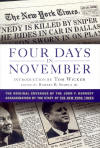 |
The New York Times
2003 |
The
original coverage of the John F.Kennedy Assassination by the Staff of "The
New York Times", still generally considered the most complete of its day.
Almost miraculously, "Times" reporters, writers, and editors produced 250
columns or about 200,000 words, on and about the very first day. The other
three days were no less exhaustive, and "The NY Times" covered the news,
from the assassination to the transition of power to the funeral. This
commemorative volume provides a poignant, firsthand account and a detailed
chronology of the events that took place in Dallas and Washington from
November 22 to November 25,1963. |
Four Days in
November
[The
Assassination of President John F.Kennedy] |
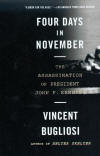 |
Bugliosi Vincent
2007 |
"Four Days in November" is
an extraordinary exciting, precise and definitive narrative of the
assassination of President John F.Kennedy on November 22,1963, by Lee
Harvey Oswald. It is drawn from "Reclaiming History : The Assassination of
President John F.Kennedy", a monumental and historic account of the event
and all the conspiracy theories it spawned, by Vincent Bugliosi, legendary
prosecutor of Charles Manson and author of "Helter Skelter". For general
readers, the carefully documented account presented in "Four Days" is
utterly persuasive : Oswald did it and he acted alone. |
|
From an office building with a high-powered rifle |
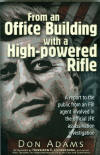 |
Adams Don
2012 |
A report to the public
from an FBI agent involved in the official JFK investigation.
As a rookie FBI agent in November 1963, Don Adams was assigned to
investigate a possible threat against the president, nine days before the
assassination. An informant had alerted authoritiees to a meeting at a
national right-wing convention, at which Joseph Milteer, a radical racist,
had threatened the president. Later, in a recorded conversation, Milteer
spoke of a plot to kill the president "from an office building ith a
high-powered rifle".
After two decades of his own research and study, here is Don Adam's
testimony. |
|
From
Love Field : our final hours with President John F.Kennedy |
 |
Connally Nellie & Herskowitz Mickey
2003 |
Nellie
Connally was in the car that morning with her husband, Texas Governor John
Connally, Jacqueline Kennedy and President John F.Kennedy sate behind her
in the backseat. In fact, Nellie was talking with the President when the
first shot rang out.
Ten days after the assassination, Nellie wrote down notes
so that her future grandchildren would know what happened to the Connalys
on November 22,1963. Inspired by these notes and dedicated to sharing the
truth of that horrible day, Nellie has gone back in time and fleshed out
the thought and feelings she had recorded and clung to so privately.
This book is the extraordinary story of a woman who so often remained in
the background but who in time of crisis came into her own...as a wife, a
mother and a friend. |
Giorni
che hanno fatto la Storia: 22.11.1963
[L'Assassinio di
JFK] |
 |
Giovanni Landi
2022 |
Book in
Italian published in
2022, as volume 27 of Collection "Giorni che hanno fatto
la storia".
22.11.1963 : JFK Assassination |
Gli
Attentatori
[Rivoltelle contro
il potere] |
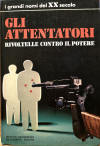 |
AA.VV.
1973 |
Book in
Italian published in 1973 by the Istituto Geografico De Agostini, part of
the Contemporary History Collection directed by Enzo Biagi.
There are 11 articles dedicated to as many sensational attacks against
important people.
Among these are the assassination of John F. Kennedy (article by Livio
Caputo) and Robert F. Kennedy (article by Gino Gullace). |
Grandi Gialli della Storia
[Un'indagine storica
e sceintifica da Jack lo Squartatore ai delitti del Mostro di Firenze] |
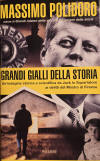
 |
Massimo Polidoro
2004 |
Italian book.
Gathering testimonies, evidence, and surprising clues, Massimo Polidoro
conducts a historical and scientific investigation into some of the most
disturbing and sensational crime cases. He sheds new light on the great
conspiracies of history and the bloody news of our time.
In the disturbing cases in this book, things are never as they seem, and
the search for a solution is constantly hindered by twists, challenges,
red herrings, and thrills. These are typical elements of crime novels, but
these pages allow us
to enjoy an advantage: reality is almost always more enigmatic,
frightening, and extreme than the most laborious of fictions.
From pages 164 to 260, the author comprehensively and exhaustively covers
the mystery of the assassination of President John F. Kennedy. |
|
H.R.1553
President John F.Kennedy ARRB Reauthorization Act |
 |
U.S: House of Representatives
1997 |
Hearing on June 4,1997 before the Subcommittee on National Security,
International Affairs and Criminal Justife of "House of
Representatives Bill 1553" to amend the President John F.Kennedy
Assassination Records Collection Act of 1992 to extend the authorization
of the
Assassination Records Review Board until September 30,1998 |
|
He was my brother
|
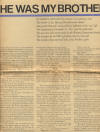 |
Oswald Robert L
1967 |
The brother of Lee Harvey
Oswald writes about : -Marguerite Oswald's extraordinary influence on her
son's life, -the nightmare of November 22,1963 and the aftermath, -the
questions left iunanswered by the Warren Commission Investigation, -the
attempts by the FBI to frighten Marina Oswald, -the evidence that
convinced him of his brother's guilt. |
Head Shot
[The science
behind the JFK Assassination]
|
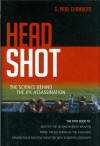 |
Chambers G.Paul
2010 |
From inner cover:
"The Kennedy Assassination was the crime of the century. Nearly fifty
years have passed since that tragic November day, yet a steady stream of
conspiracy and theoretical books still abound.
"Head Shot" scientifically resolves one of the most enduring mysteries in
US nation's history. Drawing on a fifteen-year career as an experimental
physicist for the US Navy, Dr G.Paul Chambers has produced the first work
on the subject to use the laws of physics and motion to :
- identify the real murder weapon
- prove the locations of the assassins
- demonstrate a conspiracy beyond any doubt." |
High Treason
[The
Assassinaton of President Kennedy and the new evidence of Conspiracy]
|
 |
Groden Robert J.
Livingstone Harrison Edward
1989 |
Conspiracy book.
From back cover:
"The evidence is chilling. The photographic proof is graphic and
disturbing. The facts can no longer be denied. HIGH TREASON challenges
everything we have been told about the motives behind President Kennedy's
murder. For there is now convincing evidence that, from the fateful day in
Dallas through two decades of speculation, a massive conspiracy ordered
JFK's demise and sabotaged the investigation that followed. It is a
cover-up that continues to this day.
Robert J.Groden, coauthor of "JFK:The Case for Conspiracy",and Harrison
Edward Livingston reveal the dark heart of a deadly conspiracy". |
High Treason 2
[The
Great Cover-up: The Assassinaton of President John F.Kennedy]
|
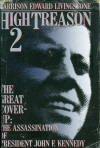 |
Livingstone Harrison Edward
1992 |
Conspiracy book.
From back cover:
"Was primary evidence used to support the lone gunman theory faked? Do
these forgeries prove a massive conspiracy? If so, how was this done and
who did it?
What part did manufactured evidence play in the cover-up? And what is the
connection between tyhe Warren Commission's conclusions and other national
tragedies of the 1960s and '70s?
In this second volume of his monumental study of President Kennedy's
Assassination, Harrison Edward Livingstone takes his courageous
investigation where no researcher has gone before. He answers these
questions and others while offering astute analysis of the political and
historical forces that mandated Kennedy's murder." |
Hit
List
[An
In-Depth investigation into the mysterious deaths of witnesses to the JFK
assassination]
|
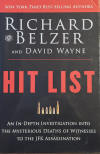 |
Richard Belzer and David Wayne
2013 |
Richard Belzer and David
Wayne are back to set the record straight after Dead Wrong; this time
they’re going to uncover the truth about the many witness deaths tied to
the JFK assassination. For decades, government pundits have dismissed
these “coincidental” deaths, even regarding them as “myths” as “urban
legends.”
Like most people, Richard and David were initially unsure about what to
make of these ‘coincidences’. After all, events don’t “consult the odds”
prior to happening; they simply happen. Then someone comes along later and
figures out what the odds of it happening were. Some of the deaths seemed
purely coincidental; heart attacks, hunting accidents. Others clearly
seemed noteworthy; witnesses who did seem to know something and did seem
to die mysteriously.
Hit List is a fair examination of the evidence of each case, leading to
(necessarily) different conclusions. The findings were absolutely
staggering; as some cases were clearly linked to a “clean-up operation”
after the murder of President Kennedy, while others were the result of
‘other forces’. The impeccable research and writing of Richard Belzer and
David Wayne show that if the government is trying to hide anything,
they’re the duo who will uncover it. |
|
HSCA
[House Select
Committee on Assassinations] - Final
Report
|
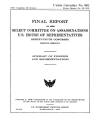 |
US - House of Representatives
1979 |
In 1976, the House Select
Committee on Assassinations undertook reinvestigations of the murders of
John F. Kennedy and Martin Luther King, Jr.
In 1979, a single Report and twelve volumes of appendices on each
assassination were published by the Congress. In the JFK case, the HSCA
found that there was a "probable conspiracy," though it was unable to
determine the nature of that conspiracy or its other participants (besides
Oswald). This finding was based in part on acoustics evidence from a tape
purported to record the shots, but was also based on other evidence
including an investigation of Ruby's underworld connections. The acoustics
evidence was disputed by a panel of scientists, but that "debunking" has
itself come under attack recently. |
|
HSCA
[House Select
Committee on Assassinations] -
Volume 1 - Hearings
|
 |
US - House of Representatives
1979 |
Volume I, the first of
five volumes of hearings of the HSCA, consists of transcripts of the HSCA
proceedings of September 6 through 8, 1978.
The opening day of hearings got underway with a statement
by Representative Richardson Preyer, followed by the testimony of Mr. and
Mrs. John Connally. The Governor of Texas in 1963, John Connally had been
involved in preparations for the fated motorcade trip. He was also wounded
in the shooting in Dealey Plaza.
The second day of testimony related to the medical evidence and analysis
in the case. Much of this was presented by Dr. Michael Baden, head of the
HSCA's nine-member Medical Panel. This day also saw the testimony of Capt.
James J. Humes, the lead prosector at the autopsy of President Kennedy.
Humes publicly retracted the autopsy report's placement of the fatal entry
wound, which the Medical Panel determined was 4 inches away from the
originally-noted spot. In 1992 for the Journal of the American Medical
Association, and again in 1996 before the Assassinations Record Review
Board, Humes retracted this retraction. The final medical witness on Sept.
7 was Dr. Cyril Wecht, the lone dissenter on the Medical Panel.
The third day, Sept. 8, continued the medical testimony and presented the
findings of the Firearms Panel, concerned with the ballistics evidence.
The final witness was Dr. Vincent Guinn, who performed Neutron Activation
Analysis (NAA) on bullet fragments to determine whether they came from the
same bullet. |
|
HSCA
[House Select
Committee on Assassinations] -
Volume 2 - Hearings
|
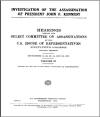 |
US - House of Representatives
1979 |
Volume II of the HSCA
hearings volumes consists of the proceedings of Sept. 11 through 15. 1978.
The transcripts of these days includes testimony about
acoustics evidence, trajectory analyses, the testimony of accused assassin
Lee Harvey Oswald's wife Marina, photographic analysis, and testimony
concerning Yuri Nosenko, a Soviet defector.
The testimony of Sept. 11 was concerned with analysis of an audiotape
purported to have captured the shooting in Dealey Plaza. It was recorded
on a Dallas Police radio channel due to a stuck-open microphone on a
police motorcycle. The acoustic analysis showed at least 4 shots, with one
of these coming from the "Grassy Knoll." This conclusion was subsequently
disputed by a panel appointed by the National Academy of Sciences, but
that rebuttal itself has been called into question by a recent peer-review
article by D.B. Thomas presented in Science and Justice in 2001.
The Sept. 12 proceedings began with the testimony of Calvin McCamy
concerning the Zapruder film, and what a detailed analysis showed about
when shots may have been fired. This was followed by a trajectory analysis
presented by Thomas Canning.
The next day of proceedings, and part of the following, was taken by the
testimony of Marina Oswald Porter, former wife of Lee Harvey Oswald.
Following that was testimony by members of the Photographic Panel, who
examined the famous "Oswald backyard photos" among other photographic
evidence relevant to the assassination.
The photographic testimony continued into Sept. 15, followed by the
testimony of John Hart. Mr Hart discussed the case of Yuri Nosenko, a
Soviet officer who defected to the U.S. in early 1964. Nosenko's "bona
fides" were a subject of great contention within the CIA, which imprisoned
and interrogated Nosenko for a period of three years. |
|
HSCA
[House Select
Committee on Assassinations] -
Volume 3 - Hearings
|
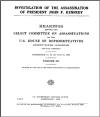 |
US - House of Representatives
1979 |
Volume III of the HSCA
hearings volumes consists of the proceedings of Sept. 18 through 21, 1978.
This included testimony from Cuban officials, the Secret Service, and
former members of the Warren Commission.
Following narrative by the HSCA's Chief Counsel G. Robert
Blakey, the first witness on Monday, Sept. 18 was Eusebio Azcue Lopez,
former Cuban Consul in Mexico City. Azcue reiterated his belief that the
person he dealt with in the fall of 1963 was not Lee Harvey Oswald. Azcue
was followed by Alfredo Mirabal Diaz, who replaced Azcue as Consul and was
also present during the "Oswald" visit.
The Sept. 19 proceedings began with Thomas Kelley, an inspector for the
Secret Service, who conducted the Secret Service' investigation into the
assassination. Mr. Kelley was followed by Secret Service Chief James
Rowley. The following day, testimony was heard from two FBI agents
involved in its investigation, James Malley and James Gayle.
Sept. 22's proceedings included the testimony of three Warren
Commissioners and its General Counsel: Former President Gerald Ford, John
Sherman Cooper, John J. McCloy, and J. Lee Rankin. They were followed by
Nicholas Katzenbach, who was Assistant Attorney General at the time of the
assassination and had written the famous "Katzenbach memo." |
|
HSCA
[House Select
Committee on Assassinations] -
Volume 4 - Hearings
|
 |
US - House of Representatives
1979 |
Volume IV contains the
proceedings of Sept. 22, 25, and 26, 1978.
The first day was taken up with the testimony of Richard
Helms, former Director of the CIA. Mr. Helms was Deputy Director for Plans
at the time of the JFK assassination, and was responsible for responding
to requests from the Warren Commission.
The morning of Sept. 25 saw the return of handwriting expert Joseph
McNally, photographic expert Sgt. Cecil Kirk, physical anthropologist Dr.
Clyde Collins Snow, and photo enhancement expert Dr. Bob Hunt. The
afternoon session included the interview of Louie Steven Witt, purported
to be the "Umbrella Man" seen in the Zapruder film. Mr. Witt was followed
by HSCA staffer Jacqueline Hess, who gave a presentation of the HSCA's
analysis regarding the "mysterious deaths" issue.
The following day began with a narrative by Chief Counsel Blakey, and then
continued with the testimony of Earl Ruby, brother of Jack Ruby. Mr. Ruby
was followed by Capt. Jack Revill of the Dallas Police Department, who was
part of the investigative team originally charged with determining how
Jack Ruby had entered the police basement where he shot Oswald. |
|
HSCA
[House Select
Committee on Assassinations] -
Volume 5 - Hearings
|
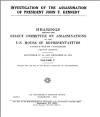 |
US - House of Representatives
1979 |
The last of the five
Hearings volumes of the HSCA consists of the proceedings of Sept. 27 and
28, 1978, plus an additional day of hearings held on December 29, 1978.
The September testimony was concerned primarily with organized crime. The
final day of hearings, held 3 months later, dealt with acoustics evidence.
Sept. 27 was taken up largely by the testimony of Ruby
associate Lewis McWillie, who worked in gambling casinos in Havana and Las
Vegas. McWillie was followed by Jose Aleman, a Cuban exile who was the son
of a former Cuban minister of education.
The following day, Sept. 28, began with the testimony of organized crime
boss Santos Trafficante, followed by a presentation by Ralph Salerno, the
Committee's consultant on organized crime. After Salerno the Committee
questioned Judge Burt Griffin, a former Warren Commission staffer who had
been involved in the Ruby investigation.
Three months later, on Dec. 29, the Committee heard more testimony on the
acoustics evidence which indicated a fourth grassy knoll shot. Witnesses
included Professor Mark Weiss and Ernest Aschkenasy, Dallas Police Officer
H. B. McLain, and Dr. James Barger. Closing remarks were made by Chief
Counsel G. Robert Blakey and Chairman Louis Stokes. |
|
HSCA
[House Select
Committee on Assassinations] -
Volume 6 - Appendix to Hearings
|
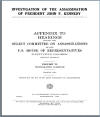 |
US - House of Representatives
1979 |
Volume VI of the HSCA's
Appendices is the report of the HSCA photographic panel.
The photographic panel examined a much wider variety of
photographs and films than did the Warren Commission. It reported on the
number and timing of shots via blur (jiggle) analysis of the Zapruder
film, and conducted a trajectory analysis as well. It conducted
authenticity studies on the Oswald "backyard" photos and the Kennedy
autopsy photos, although documents which came to light in the late 1990s
cast doubt on the panel's work related to the autopsy photos (see ARRB
staff memos). The panel reviewed photos of the "grassy knoll" in order to
determine if a gunman was visible in them, and it also examined particular
photos to try to settle questions relating to the identity of persons in
the photos. |
|
HSCA
[House Select
Committee on Assassinations] -
Volume 7 - Appendix to Hearings
|
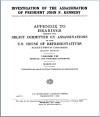 |
US - House of Representatives
1979 |
Volume VII of the HSCA's
Appendices contains the reports of the HSCA medical panel and its firearms
panel.
The medical panel affirmed the Warren Commission's
conclusions regarding the direction from which shots came (behind and
above) and endorsed the single bullet theory, with one dissenting member.
However, basic findings of the autopsy doctors were disputed by the
medical panel, including the location of wounds in Kennedy's body. In the
1990s, formerly-secret medical testimony taken by HSCA staffers showed
that many autopsy witnesses gave information which directly contradicted
the autopsy doctors and the photographs, and the HSCA misrepresented their
views in this report (apparently the medical panel members never saw these
staff interviews).
The much shorter firearms panel report includes information on the
Kennedy, Tippit, and Oswald shooting, and includes many photographic
exhibits. |
![]()